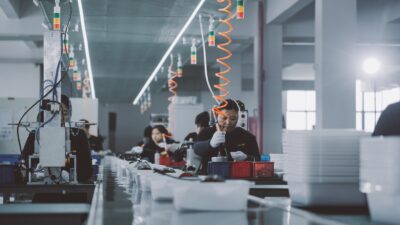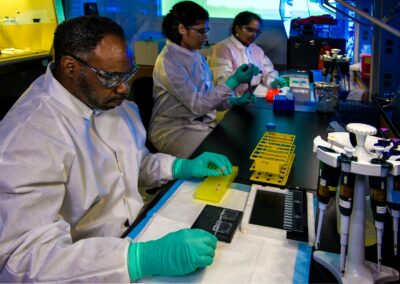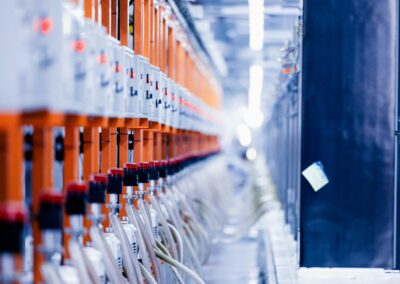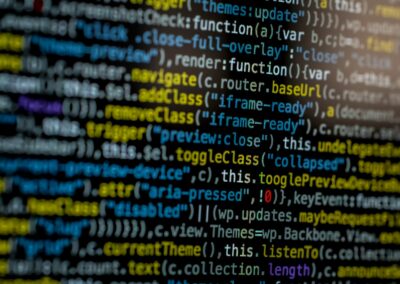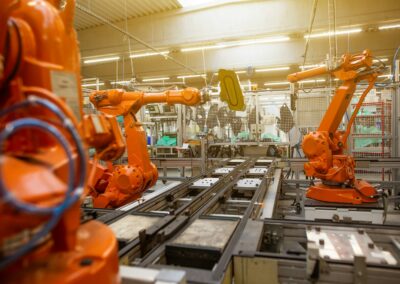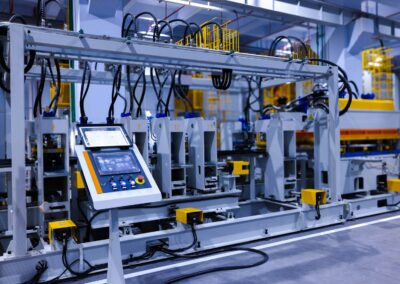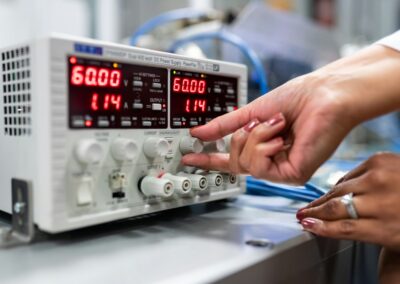Enhancing Product Quality with Digital Twin Technology
The Role of Digital Twins in Modern Manufacturing
In the realm of modern manufacturing, ensuring product quality and consistency across different sites can be a daunting challenge. The concept of digital twins is revolutionizing this aspect of manufacturing by providing a virtual representation of physical assets, processes, and systems. Digital twins allow manufacturers to simulate, monitor, and optimize production processes in real-time, thereby enhancing product quality and ensuring uniformity across various production sites.
A digital twin is essentially a dynamic digital replica of a physical entity or process. By integrating data from sensors and other inputs, digital twins offer a comprehensive view of manufacturing operations, enabling businesses to track performance and quality metrics with unprecedented accuracy. In regions such as Saudi Arabia and the UAE, where manufacturing sectors are expanding rapidly, the adoption of digital twin technology is becoming increasingly vital. This technology not only aids in maintaining high standards of product quality but also supports the optimization of manufacturing processes to achieve greater efficiency.
The implementation of digital twins in manufacturing involves creating a virtual model that mirrors the physical production line. This model is continually updated with real-time data, allowing manufacturers to monitor operations, detect deviations, and address issues promptly. By using digital twins, companies can ensure that their products meet the desired quality standards across different manufacturing sites, which is crucial for maintaining brand reputation and customer satisfaction.
Ensuring Consistency Across Multiple Manufacturing Sites
One of the key advantages of digital twins is their ability to ensure product consistency across multiple manufacturing locations. In a globalized manufacturing environment, maintaining uniformity in product quality can be challenging due to variations in equipment, processes, and local conditions. Digital twins address this challenge by providing a standardized framework for monitoring and controlling production processes.
With digital twins, manufacturers can create a central model that integrates data from various production sites. This model serves as a reference point for assessing the performance and quality of products across different locations. By analyzing data from each site, companies can identify discrepancies and implement corrective measures to ensure that all sites adhere to the same quality standards. This approach not only helps in maintaining product consistency but also facilitates the efficient management of resources and production schedules.
In cities like Riyadh and Dubai, where industrial growth is robust, the use of digital twins for maintaining product quality is particularly beneficial. These cities are home to numerous manufacturing facilities that produce a wide range of products, from consumer goods to advanced technologies. By leveraging digital twins, manufacturers in these regions can achieve greater control over their production processes, enhance product quality, and remain competitive in the global market.
Integrating Digital Twins with Modern Technologies
The integration of digital twins with other modern technologies, such as artificial intelligence (AI) and blockchain, further amplifies their effectiveness in ensuring product quality. AI can analyze data from digital twins to identify patterns and predict potential quality issues before they occur. This predictive capability enables manufacturers to proactively address problems and improve product consistency.
Blockchain technology, on the other hand, can enhance the transparency and security of data associated with digital twins. By creating an immutable record of data and changes, blockchain ensures that all information related to product quality is accurate and tamper-proof. This integration of digital twins with AI and blockchain not only enhances quality control but also supports compliance with industry standards and regulations.
In the context of executive coaching and leadership development, understanding and leveraging digital twins can also provide valuable insights into decision-making processes. Leaders can use digital twins to simulate different scenarios and assess the potential impact of their decisions on product quality and manufacturing efficiency. This capability supports better strategic planning and fosters a culture of continuous improvement.
Conclusion: The Future of Digital Twins in Manufacturing
Digital twins are reshaping the manufacturing landscape by providing advanced tools for ensuring product quality and consistency across multiple sites. Through the use of virtual replicas and real-time data, manufacturers can achieve a higher level of control over their production processes, maintain uniformity in product quality, and optimize their operations for greater efficiency.
As the manufacturing industry continues to evolve, the integration of digital twins with emerging technologies such as AI and blockchain will further enhance their capabilities. For businesses in Saudi Arabia, the UAE, and beyond, embracing digital twins offers a strategic advantage in maintaining high standards of product quality and achieving success in a competitive market.
In summary, digital twins represent a significant advancement in manufacturing technology, enabling companies to address challenges related to product quality and consistency. By leveraging this technology, businesses can enhance their manufacturing processes, improve product quality, and drive growth in an increasingly complex and dynamic industry.
—
#DigitalTwins #ProductQuality #ManufacturingConsistency #SmartManufacturing #SaudiArabia #UAE #Riyadh #Dubai #ArtificialIntelligence #Blockchain #BusinessSuccess #ProjectManagement



